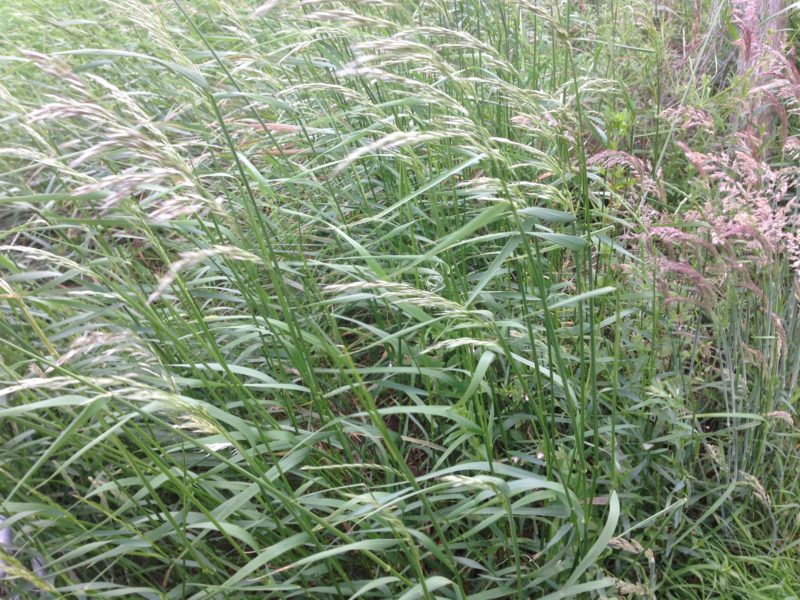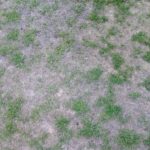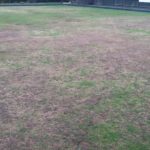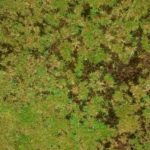Essential Greenkeeping tasks for December include aeration, moss control, microbe boosting, disease prevention and keeping the surface clear of worm casts.
Author: John
Master Greenkeeper John Quinn is the author of Performance Bowling Greens, and several other titles on Greenkeeping, Club and Business Management.
Feeding the Roses with Pound Notes

I have lost count of the words I have written, conversations I have had and arguments I have inadvertently started about one of greenkeepings greatest follies; routinely top-dressing your green with high sand content top dressing composts year in and year out. During my greenkeeping career over 3 decades and during countless hours of research I have been amazed to find clubs where 5, 7 or even 10 tonnes of top-dressing is being applied every autumn.
The really tragic thing about this practice is that in every case the club are paying for a contractor to hollow tine (core) the green and then apply this material.
Let me ask you where the cores from your green go after they are lifted?
I would hazard a guess that you either spread them on the rose beds around the green or give them away to members for their gardens.
Now hollow tining is typically carried out to a depth of 100mm (4 inches) and usually only 10-15 percent of the core is unwanted thatch.
So that means that 85-90% of each core is made up of all of the expensive top-dressing you have been applying over the years. No wonder the roses look so good!
With top-dressing now costing around £160 per tonne, its easy to see how hundreds of pounds are wasted like this on nearly every bowling green in the UK every year.
In addition to this there are a lot of negative agronomic impacts associated with this practice.
Localised Dry Patch is exacerbated by excessive sand content. This causes areas of the green surface to become impervious to water and dry out completely. The end result is an un-healthy, bumpy green which becomes susceptible to disease, moss infestation and loss of grass cover.
This is just one instance of good money being thrown after bad at just about every bowling green across the land.
Now this is not to say that top-dressing is never required or isn’t a valuable tool in the greenkeepers arsenal. There are times when top-dressing is absolutely the right thing to do.
However, there is generally no need to blindly apply several tonnes every autumn, only to keep the roses looking good!
Over-seeding Fact and Fiction
Another very popular subject on this site is over-seeding of greens in Autumn.
Over-seeding is commonly carried out as part of the autumn bowling green maintenance and renovation program and is very often a disappointment.
You would expect this work to quickly fill in the bare patches and spaces in the sward left by disease, localised dry patch and a host of other green problems, but this is very often not the case…why?
The answer to most disappointing results from over-seeding is “competition”. Competition from the mature, indigenous grasses whether fine or weed grasses like annual meadow grass usually reduces the success or survival rate from over-seeding to a very small percentage.
This quite often comes as a surprise to greenkeepers who have observed a very good “take” shortly after seeding (7-14 days). At this early stage it is not uncommon to see vigorous lines of dense new seedlings bursting forth from the green. This however, is usually a false reading.
At this very Read more

Grass Identification on the Bowling Green
Grass identification is a key skill for the greenkeeper and over at the Bowls Central Academy the students have been spending a fair bit of time recently finding out about that and all of the things that can go wrong on and under the green. They have then applied this learning to their own greens to enable them to develop a sound maintenance and renovation program for their greens.

Mair Sand
"Mair sand" was the call from Tom Morris the most famous and respected greenkeeper of them all, but have we misunderstood him? In reply to an article about fine, firm golf greens John Quinn highlights the similarities between the plight of golf and bowls greens and clears up the apparent contradiction between modern day problems with inert greens and the Tom Morris philosophy.





